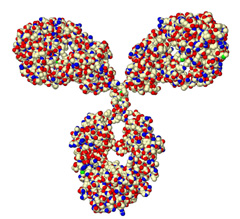As part of the company's continued support within the field, Malvern Panalytical has published a comprehensive, highly accessible technical note introducing readers to the basics of protein chemistry. The document, 'An Introduction to Proteins in 30 minutes' is now available to download from Malvern Panalytical's website. http://www.malvern.com/Malvern Panalytical/kbase.nsf/allbyno/KB001928/$file/MRK1198-02.pdf

Covering protein composition and structure, the paper also includes measurement and characterization techniques. As an instrument manufacturer, Malvern Panalytical has extensive experience in how size, molecular weight and zeta potential measurements can aid both manufacturers and researchers working with proteins.
While Dynamic Light Scattering (DLS) is a relatively recent technique in the field of proteins, the lessons learned from materials science and other fields are helpful to protein chemists. Malvern Panalytical's Zetasizer software, for example, has a model to predict a protein's molecular weight from hydrodynamic size measurements. Size measurements can also be used as a predictor of structural activity. In conditions of extreme temperature and pH a protein will become denatured. By measuring hydrodynamic radius using DLS, this behaviour can be understood and controlled, enabling establishment of the protein's melting point, for example.
Other techniques, such as Static Light Scattering (SLS), Size Exclusion Chromatography (SEC) and the measurement of zeta potential as an indication of surface charge are also covered by Malvern Panalytical's new technical note. A highly useful introduction for newcomers into the fields of biochemistry, molecular biology and pharmacology, Malvern Panalytical also anticipates that the download will be a useful tool to highlight the benefits of characterization instrumentation among protein chemistry experts. http://www.malvern.com/Malvern Panalytical/kbase.nsf/allbyno/KB001928/$file/MRK1198-02.pdf